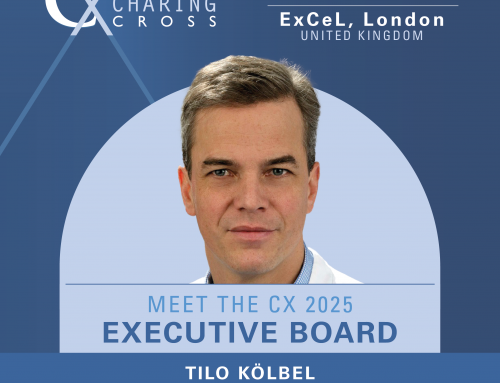The Charing Cross Symposium is launching the new CX Vascular Access Course to be held at Olympia Grand, London, UK. The three-day course (27–29 April 2016) will provide both experts and those new to the field with invaluable insights into the challenges currently facing haemodialysis vascular access, and the methods used to overcome them. It will bring together world experts to cover current practice and remaining challenges. It will be made up of a vascular access masterclass, a practical skills course and an abstract presentation day, immersing delegates in the most important issues and innovation in haemodialysis vascular access medicine. Course directors Domenico Valenti and Nicholas Inston speak about the focus of the course.

Domenico Valenti and Nicholas Inston
What are the current challenges in the treatment of patients with kidney failure requiring vascular access?
There are a number of significant challenges. The first is timely identification and referral of patients who require access. Those patients who start dialysis on a CVC (line) have much lower rates of definitive access than those who have been referred to a surgeon prior to dialysis initiation. Once a patient is referred, the most common choice of access appears to be guideline-driven, which may not suit many patient groups. The individual tailoring of access appears to be key to success and a pure guideline-based “fistula first in a distal position” is challenged by many experts in the field. In maintaining patency and longevity in fistulae and grafts the key role of multidisciplinary care—between dialysis nurses, nephrologists, surgeons and interventional radiologists—is becoming better appreciated and the application of technological innovations is increasing. With increased application the evidence base is often poor and expensive invasive techniques are difficult to compare due to lack of quality trials.
The lack of any useful pharmacological treatments for arteriovenous fistulae, either at the time of creation or to maintain patency, is a major concern, particularly when maturation failure rates are high. Adjuncts to improve primary patency and prevent the formation of neointimal hyperplasia would be a major advance in the field with direct benefit to patients.
What are the current challenges in treating steal syndrome?
Treatments to maintain vascular access patency whilst avoiding distal ischaemia are challenging. Preoperative prediction of steal syndrome (or haemodialysis access-induced distal ischaemia—HAIDI), diagnosis and specific treatment are again driven by poor data. Further good quality studies based on standardised classifications are required, particularly longitudinal observational studies to define the natural history of HAIDI and outcomes of treatment.
This year, CX delegates will experience a new Vascular Access Course, with activities over three days. What will participants learn in the masterclass to be held on the first day of the course (27 April)?
The introduction of a masterclass focused on haemodialysis vascular access—a controversial area—is a new approach for vascular access at CX. By assembling a faculty of world experts and in conjunction with audience interaction, we expect to not only cover the current state-of-the-art practice in the area but also define the evidence gaps that require further study.
What new technologies will be discussed in the course?
The rapidly evolving technological field of vascular access encompasses diagnostic and interventional devices. World experts in the areas of imaging, surgery and interventional radiology will be assembled to discuss multiple technologies such as grafts, stents and even non-surgical arteriovenous fistulae creation.
On the second day (28 April), participants will take part in a skills course. What are the benefits of having a practical session on vascular access and what can delegates expect to learn from it?
The addition of a hands-on course is intended to give delegates the ability to gain practical skills and be tutored through the many techniques involved in vascular access. As it covers the whole spectrum of vascular access it is suitable for those new to access as well as those with expertise.
Could you please highlight some of the stations you are looking forward to seeing at the CX Vascular Access Skills Course?
Ultrasound assessment is always popular, and it is always good to pick up tricks from world experts. The benefit of the skills course is that the demonstrators can explain why they do something.
The presentation of vascular access abstracts is scheduled for Friday 29 April. What is your opinion about this year’s abstracts?
The volume of high quality abstracts submitted confirms a growing interest from both trainees and established surgeons in the field. Many questions still remain in haemodialysis vascular access and the research submitted aims to answer many of these. The session will be thought-provoking and should promote debate.
The new CX Vascular Access Course will take place at the Charing Cross Symposium on 27–29 April – Pillar Hall Learning Centre and Exhibition Hall, Olympia Grand, London, UK
Click here to see the CX Interactive Parallel Sessions Programme – CX Vascular Access Course (Main Programme)
Click here to see the CX Interactive Parallel Sessions Programme – CX Vascular Access Course (Skills Course)
Click here to see the CX Interactive Parallel Sessions Programme – CX Vascular Access Abstract Presentations
Click here to register







